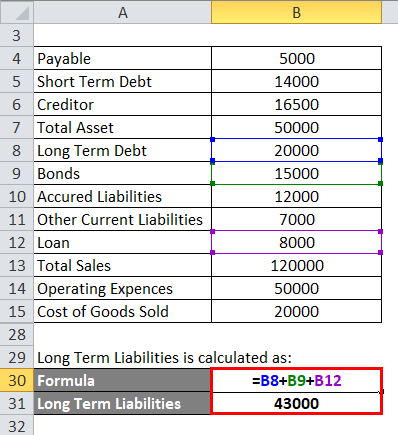
Invoice financing and factoring are similar but have several key differences. In order to use invoice financing, you have to apply with a lender and get approval to borrow against certain invoices. You can then get an advance on the amount your client owes you. The business using the invoice factor is then paid the balance of the value minus the factoring fee when the invoices are collected. Invoice factoring prevents late payments from causing cash flow problems. This external financing can free up funds, yet only 2% of SMEs used it in 2020 [1].
You could turn to a traditional bank for a loan, but it likely would require stellar personal credit plus collateral, a physical asset such as real estate that the lender could sell if you default. Or maybe you qualify but can’t wait several months for the loan to close. Let’s say you own a hardware store and sell goods to another business, creating a $10,000 invoice. Your customer agrees to pay off its invoice in 30 days, but you need the cash next week to pay your employees.
Advance rate
Both invoice factoring and invoice financing use unpaid invoices to secure immediate cash. Invoice financing is sometimes used as an umbrella term that covers all methods that use outstanding invoices to gain cash. However, sometimes invoice financing refers specifically to the practice of using invoices as collateral to secure loans while factoring refers to selling invoices to a factoring company in exchange for cash. Like a loan, invoice factoring does grant you access to capital you don’t have at the moment, but it’s not technically considered a loan. Rather than lending you money with the expectation that you repay the loan, an invoicing factoring company buys up a batch of your invoices in exchange for cash. Within 30 to 90 days, they’ll earn the money back when they collect payment from your customers.
Bankrate follows a strict
editorial policy, so you can trust that our content is honest and accurate. Our award-winning editors and reporters create honest and accurate content to help you make the right financial decisions. The content created by our editorial staff is objective, factual, and not influenced by our advertisers. Our experts have been helping you master your money for over four decades.
Application/Due Diligence Fee
Your client will pay the factoring company according to the terms of the invoice. The factoring company will handle the collection on all invoices you assign to it, as governed by the Federal Assignment of Claims Act. It’ll try to follow your history of collection techniques unless the client is past due.
Invoice factoring and financing have one key difference that makes them two different types of business financing. Businesses that use invoice financing are responsible for collecting payment and use those funds to repay the lender. In short, invoice factoring is the purchasing of your accounts receivables – your unpaid invoices no older than 30 days old. You do the work, you sell us the invoice, we advance you up to 100 percent of the invoice immediately, and we collect the money from your client. After purchasing outstanding invoices from a business, the invoice factoring company will send the business a portion of the invoice amount upfront.
What Qualities Should I Look For In A Factoring Company?
Our goal is to give you the best advice to help you make smart personal finance decisions. We follow strict guidelines to ensure that our editorial content is not influenced by advertisers. Our editorial team receives no direct compensation from advertisers, and our content is thoroughly fact-checked to ensure accuracy.
Imperial Advance business loans: 2023 review – Bankrate.com
Imperial Advance business loans: 2023 review.
Posted: Thu, 01 Jun 2023 07:00:00 GMT [source]
It is a strategic financial tool that helps businesses of all sizes improve cash flow, regardless of their financial situation. According to the Federal Reserve Banks’ Small Business Credit Survey, only 4% of small businesses used factoring in 2021, compared to 72% that used loans and lines of credit. Every factoring company, business, and their customers are different, so these steps are generalized accordingly. This is more or less what you can expect when you factor an invoice. If you’re a new business or have bad credit, factoring may be easier to qualify for as it relies more heavily on the credit profiles of your customers.
How Can Your Company Benefit by Factoring Invoices with Riviera Finance?
It’s best to use customers with good payment history for invoice factoring when possible. Invoice factoring companies charge different fees but most fall between 0.5% and 5%. If you’re interested in invoice factoring, you can contact a factoring company to get a personalized quote. The exact fee you pay may depend on the invoice volume, your business’ industry and your customers’ creditworthiness, among other factors.
- To assess whether invoice factoring is right for your business, make sure to consider your business goals, financing needs, and the value of your unpaid invoices.
- If the factoring company contacts your customer, it presents itself as your billing department.
- A growing number of small businesses are factoring invoices, as it provides them with immediate access to working capital.
- Invoice factoring is also known as accounts receivable factoring or A/R financing.
- In many industries, it’s not uncommon for standard payment terms to be anywhere from 30 to 120 days.
This wide disparity is yet another reason to check with your factor before jumping into a relationship. Invoice factoring will give you complete control over your collection service. This allows you more time to focus on other areas of your investing activities do not include the business. In this post, we explore how invoice factoring works, what it costs, its pros and cons, and more. Read on for a thorough explanation of invoice factoring, or use the links below to skip to the section that best answers your query.














